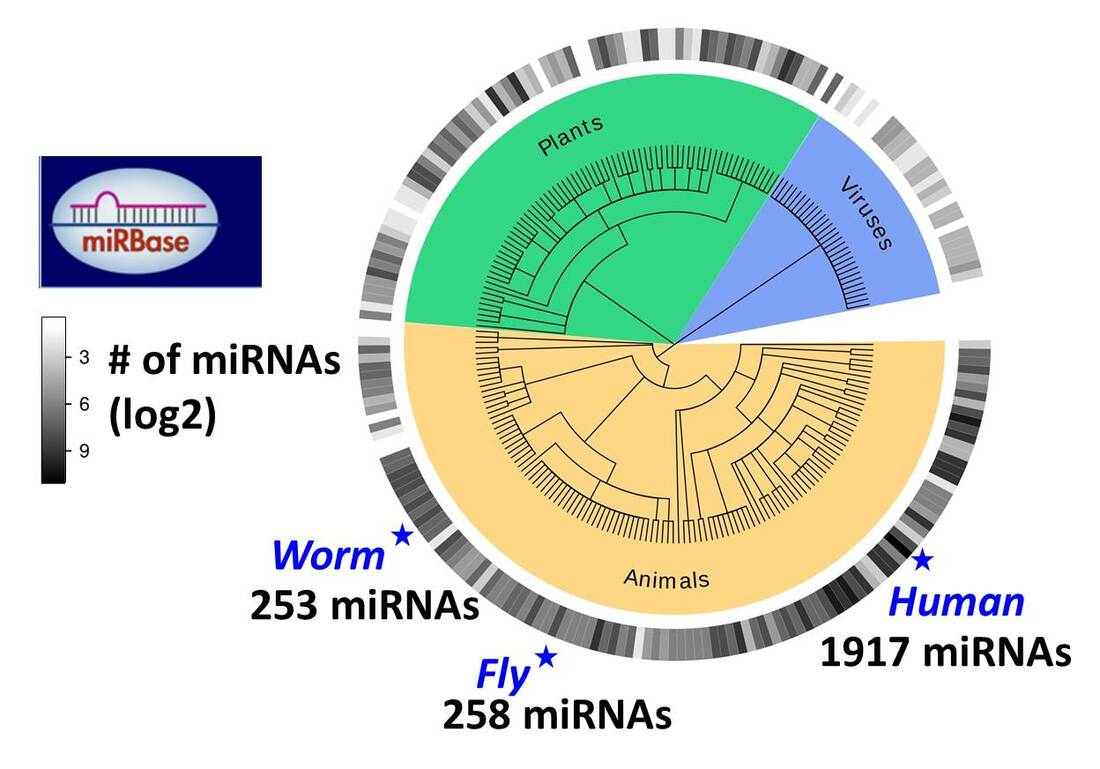MicroRNA research has emerged as a groundbreaking frontier in molecular biology, unveiling intricate mechanisms of gene regulation with profound implications for human health. Pioneered by Nobel laureate Gary Ruvkun and his colleagues, this field has transitioned from obscurity in the early 1990s to the centerpiece of modern genetic studies as evidenced by its recognition in the 2024 Nobel Prize in Physiology or Medicine. With generous NIH funding aiding their explorations, Ruvkun’s investigations into C. elegans genetics not only discovered these tiny regulatory molecules but also hinted at their vast potential in the realm of RNA therapeutics. As scientists extend the understanding of microRNAs’ roles across different species, innovative therapies targeting diseases such as cancer and Alzheimer’s are now poised for clinical application. The ripple effects of this research continue to expand, reshaping the landscape of genetics and providing fresh avenues for treatment.
Research on small non-coding RNAs, commonly referred to as microRNAs, represents an exciting evolution in the exploration of genetic control mechanisms. The early discoveries by Gary Ruvkun, which seemed modest at the time, have now laid the groundwork for significant advancements in the fields of molecular genetics and biopharmaceuticals. MicroRNAs, particularly in model organisms like the roundworm C. elegans, play pivotal roles in regulating gene expression and have implications in developing cutting-edge therapies. As interest from researchers has surged, these tiny molecules have begun to reveal their impact on human health and disease management, particularly in areas such as oncology and neurological disorders. This surge in attention underscores the importance of continued federal support for transformative scientific inquiries.
The Revolutionary Impact of MicroRNA Research
MicroRNA research has fundamentally changed our understanding of gene regulation, particularly highlighted by the groundbreaking discoveries from Gary Ruvkun and Victor Ambros. Initially met with skepticism, their work on microRNAs in the tiny C. elegans roundworm laid the foundation for a vast area of research that now spans implications for human health and disease. As researchers begin to compile evidence illustrating the crucial roles microRNAs play in various biological processes, it’s clear that these tiny molecules are pivotal in mediating the complex interactions of genes and proteins across different species, including humans.
This revolutionary impact can be felt in various medical fields, where microRNA-based therapies are now being explored for conditions such as heart disease, cancer, and neurodegenerative disorders. With ongoing clinical trials, researchers are optimistic about the potential of RNA therapeutics to transform how we approach treatment. Ruvkun’s insights into RNA’s fundamental roles in gene expression have kindled a global interest that resonates within the scientific community, ensuring that microRNA research remains a dynamic and evolving field.
Frequently Asked Questions
What is the significance of Gary Ruvkun’s microRNA research in the context of the 2024 Nobel Prize?
Gary Ruvkun’s groundbreaking research on microRNA, which he conducted with Victor Ambros in 1992, revealed a vital mechanism of gene regulation in the C. elegans organism. This discovery was pivotal to understanding the gene control systems in various species, including humans. Their work eventually earned them the 2024 Nobel Prize, highlighting the importance of microRNA research in molecular biology and its implications for RNA therapeutics.
How has NIH funding impacted Gary Ruvkun’s microRNA research and its development?
NIH funding has been crucial for Gary Ruvkun’s microRNA research, providing approximately $150,000 annually over 40 years. This federal support allowed Ruvkun to conduct foundational research that led to significant advancements in understanding microRNAs’ role in gene regulation and their therapeutic potential. The continuous backing from NIH facilitated a growth in interest and expanded the research community focused on RNA and gene regulation.
What role do microRNAs play in C. elegans genetics according to recent studies?
Recent studies emphasize that microRNAs are key players in C. elegans genetics by regulating gene expression and influencing developmental processes. The work of Gary Ruvkun and others showcased how these small RNA molecules control protein synthesis, thereby affecting the organism’s growth, maturity, and function, ultimately reinforcing the relevance of microRNA research in understanding genetic regulation.
Can you explain the applications of RNA therapeutics that stem from microRNA research?
RNA therapeutics developed from microRNA research focus on treating diseases such as heart disease, cancer, Crohn’s Disease, and Alzheimer’s. These therapies utilize the regulatory functions of microRNAs to manipulate gene expression, offering innovative treatment avenues that are currently undergoing clinical trials, illustrating the transformative potential of microRNA research in modern medicine.
Why is Gary Ruvkun optimistic about the future of microRNA research despite funding challenges?
Gary Ruvkun remains optimistic about the future of microRNA research due to its growing recognition and potential within the scientific community. He believes that the foundational work in the field, aided by federal funding and collaboration across various disciplines, will continue to lead to significant scientific advancements and therapeutic developments, despite current challenges in securing research grants.
| Key Points |
|---|
| Gary Ruvkun and Victor Ambros discovered microRNA in 1992, leading to the Nobel Prize in 2024. |
| Their work initially attracted limited interest and was mostly funded by NIH grants. |
| MicroRNAs play a crucial role in gene regulation across various organisms, including humans. |
| Therapies based on microRNAs are currently in clinical trials for diseases like cancer and Alzheimer’s. |
| Ruvkun’s lab research has been primarily federally funded, emphasizing the importance of this support. |
| The rise of biotechnology companies like Alnylam showcases the impact of basic research funded by federal grants. |
| There is growing concern about a potential decline in federal funding and its impact on scientific research in the U.S. |
Summary
MicroRNA research has transformed our understanding of genetic regulation, highlighting its significance in health and disease. The pioneering work of Gary Ruvkun and Victor Ambros not only laid the foundation for groundbreaking discoveries but also illustrated how funding and collaboration can accelerate scientific advancements. As therapies derived from microRNA research advance through clinical trials, the potential for innovative treatments grows, underscoring the need for continued investment in this vital area.
